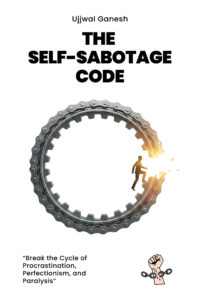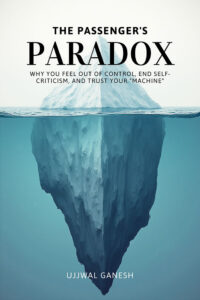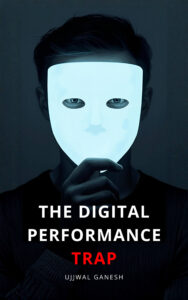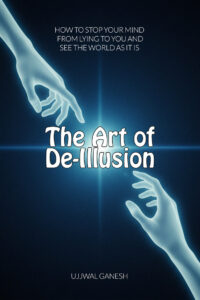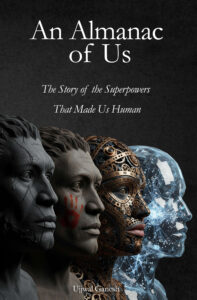Imagine a crime committed in broad daylight, in a room full of the world’s best investigators. The culprit is not hidden. It is 48 times larger than any of the clues the experts are trained to find. Yet, when the investigation is over, an astonishing 83% of them never saw it at all.
This isn’t the plot of a mystery novel. It’s the result of a real study that reveals a fundamental glitch in the human brain. The investigators were expert radiologists, masters at spotting tiny, cancerous nodules on lung scans. In the experiment, researchers digitally inserted a small image of a gorilla onto one of the scans. The experts, with their attention narrowly focused on the hunt for nodules, looked directly at the gorilla but their brains simply filtered it out.
This phenomenon is called inattentional blindness, and it proves a startling truth: your ability to see the world has very little to do with your eyesight and everything to do with the quality of your attention.
This “Invisible Gorilla” effect, named after a famous experiment where people miss a gorilla walking through a basketball game, isn’t just a quirky brain teaser. It is a constant and powerful force in your daily life, creating invisible blind spots that shape your relationships, your career, and your perception of reality. It is the engine that fuels your hidden biases.
How Your Focused Attention Makes You Blind
How can we look directly at something so obvious and not see it? The answer lies in the brain’s need for efficiency. As we explored in the concept of the 11-Million Bit Problem, your brain is a master filter. When you give it a specific task—”count the basketball passes,” “find the cancerous nodules,” “finish this urgent report”—it dedicates its limited attentional resources to that command.
To do this effectively, it must treat everything else as irrelevant noise. It’s a survival mechanism that allows us to focus and achieve goals. But this intense focus comes at a cost: it creates temporary blindness to anything outside the narrow beam of our attention, no matter how obvious.
This isn’t a rare occurrence; it’s the default state in which we navigate our complex lives. The real danger isn’t the one-off experiment; it’s the thousands of “gorillas” we miss every single day.
- The “Meeting Gorilla”: You’re so focused on delivering your presentation points perfectly that you are completely blind to the fact that your boss is frowning and your team members are subtly glancing at their watches.
- The “Relationship Gorilla”: You’re so focused on the “task” of winning an argument with your partner—on proving your point and defending your position—that you become blind to the obvious pain and frustration in their eyes.
- The “Project Gorilla”: You’re so focused on executing a project according to the original plan that you’re blind to the glaringly obvious data that shows customer needs have changed, and the entire project is now heading for failure.
In each case, the truth is hiding in plain sight. But our focused attention on a specific goal makes us the last to see it.
From Blind Spots to Biases
This neurological glitch is more than just a momentary blind spot; it’s the fertile ground where our most stubborn cognitive biases take root. Inattentional blindness is the mechanism that allows our biases to thrive by filtering reality to fit our expectations.
Think about Confirmation Bias, our tendency to favor information that confirms our existing beliefs. If you believe a certain political approach is wrong, your attention will be narrowly focused on finding news articles and data that prove your point. You will become functionally blind to the “gorillas” of contradictory evidence, even when they are well-reasoned and presented clearly. Your focus on being right prevents you from seeing the truth.
The same is true for Stereotyping. When we hold a stereotype about a group of people, our attention narrows. We become hyper-aware of any action that confirms the stereotype while being completely blind to the thousands of individual behaviors that contradict it. The gorilla of their true, complex personality remains invisible to us because we are only looking for the pattern we expect to see.
A Practical Guide to Spotting Your Own Gorillas
You cannot eliminate inattentional blindness, but you can train your mind to be more aware of it. The goal is to learn how to strategically widen your attentional aperture, especially in high-stakes situations. Here are three practical tools to help you spot the gorillas in your own life.
Tool #1: Widen Your Aperture with a “Curiosity Goal”
Before you enter a situation where you tend to have tunnel vision (like an important meeting or a difficult conversation), set two goals. The first is your normal performance goal (e.g., “persuade my team to adopt my idea”). The second is a curiosity goal (e.g., “identify the person who speaks the least and try to understand why”). This second, observational goal forces your brain to widen its focus beyond your own agenda, making you far more likely to notice the important group dynamics you would otherwise miss.
Tool #2: Conduct a “What Am I Missing?” Review
At the end of a long day or a complex project, our instinct is to review what we accomplished. To train yourself to see your blind spots, do the opposite. Take five minutes and ask only one question: “If there was a gorilla in the room today, what might it have been?” This question reframes your reflection from self-reassurance to critical awareness. It encourages you to actively hunt for the disconfirming evidence, the unspoken tensions, and the inconvenient truths you may have filtered out.
Tool #3: Appoint a “Designated Dissenter”
In a team environment, you can formalize the search for gorillas. Inspired by the military practice of a “red team,” you can appoint a “designated dissenter” for a specific project or meeting. This person’s sole job is to challenge assumptions and actively look for flaws in the plan. By giving someone explicit permission to find the gorilla, you create a culture that is less likely to be blindsided by the obvious.
The Courage to Truly See
The radiologists in the study were not unintelligent. They were highly focused experts. Their failure was not one of intellect, but of attention. Their story reminds us that seeing is not a passive act of receiving data; it is an active and deliberate choice.
Most of the time, we choose to narrow our focus on the task at hand. But we can also choose to zoom out, to ask what we’re missing, and to look at the world with a wider, more curious lens.
This practice of conscious observation is the central theme of my book, The Observation Effect. It provides a complete framework for training your attention, moving beyond the brain’s default settings, and learning to see the world with the stunning clarity of an expert observer. Waking up to the gorillas in your life can be uncomfortable, but it is the only path to true awareness and a life lived with open eyes.





